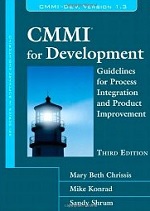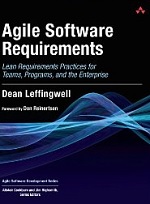|
Home
Curriculum Vitae
Últimas experiências
► Bibliografia
Contato




|

Bibliografia (por autor)

Faldu 2013 [PDF]
Configuration Manager Field Experience
Microsoft System Center
Rushi Faldu, Manish Raval, Brandon Linton, Kaushal Pandey and series editor Mitch Tulloch; Sep 2013 [92 pages]
Part of a series of specialized guides on System Center—this book delivers a focused drilldown on using Configuration Manager for queries and custom reporting, with scenario-based guidance for deployment success. Written by experts on the Microsoft System Center team and with Microsoft MVP Mitch Tulloch as series editor, this title provides concise, from-the-field guidance as you step through key concepts and tasks.
|

Faldu 2013b [PDF]
Troubleshooting Configuration Manager
Microsoft System Center
Rushi Faldu, Manoj Kumar Pal, Andre Della Monica, Kaushal Pandey, and series editor Mitch Tulloch; Nov 2013 [108 pages]
Part of a series of specialized guides on System Center—this book addresses the most common pain points for Configuration Manager administrators, providing insider and from-the-field insights to help you succeed. Written by experts on the Microsoft System Center team and with Microsoft MVP Mitch Tulloch as series editor, this title delivers concise technical guidance as you step through key concepts and tasks.
|

Farley 2013 [PDF]
Rethinking Enterprise Storage
A Hybrid Cloud Model
Marc Farley; Jul 2013 [120 pages]
Discover how a hybrid cloud model—combining cloud storage services with traditional on-premise storage—can solve multiple storage challenges cost-effectively, all under a single data management system. Focusing on the Microsoft hybrid cloud storage solution, this book offers concise insights on technical, strategic, and practical considerations—so you can begin evaluating potential benefits to your organization.
|

Fowler 2011
Patterns of Enterprise Application Architecture
Fowler at alli. Addison-Wesley, 2003.
The practice of enterprise application development has benefited from the emergence of many new enabling technologies. Multi-tiered object-oriented platforms, such as Java and .NET, have become commonplace. These new tools and technologies are capable of building powerful applications, but they are not easily implemented. Common failures in enterprise applications often occur because their developers do not understand the architectural lessons that experienced object developers have learned.
Patterns of Enterprise Application Architecture is written in direct response to the stiff challenges that face enterprise application developers. The author, noted object-oriented designer Martin Fowler, noticed that despite changes in technology–from Smalltalk to CORBA to Java to .NET–the same basic design ideas can be adapted and applied to solve common problems. With the help of an expert group of contributors, Martin distills over forty recurring solutions into patterns. The result is an indispensable handbook of solutions that are applicable to any enterprise application platform.
This book is actually two books in one. The first section is a short tutorial on developing enterprise applications, which you can read from start to finish to understand the scope of the book’s lessons. The next section, the bulk of the book, is a detailed reference to the patterns themselves. Each pattern provides usage and implementation information, as well as detailed code examples in Java or C#. The entire book is also richly illustrated with UML diagrams to further explain the concepts.
Armed with this book, you will have the knowledge necessary to make important architectural decisions about building an enterprise application and the proven patterns for use when building them.
|

Fowler 2011 b
Domain-Specific Languages
Fowler & Parsons. Addinson-Wesley, 2010.
When carefully selected and used, Domain-Specific Languages (DSLs) may simplify complex code, promote effective communication with customers, improve productivity, and unclog development bottlenecks. In Domain-Specific Languages , noted software development expert Martin Fowler first provides the information software professionals need to decide if and when to utilize DSLs. Then, where DSLs prove suitable, Fowler presents effective techniques for building them, and guides software engineers in choosing the right approaches for their applications.
This book’s techniques may be utilized with most modern object-oriented languages; the author provides numerous examples in Java and C#, as well as selected examples in Ruby. Wherever possible, chapters are organized to be self-standing, and most reference topics are presented in a familiar patterns format.
Armed with this wide-ranging book, developers will have the knowledge they need to make important decisions about DSLs—and, where appropriate, gain the significant technical and business benefits they offer.
The topics covered include how DSLs compare to frameworks and libraries, and when those alternatives are sufficient; using parsers and parser generators, and parsing external DSLs; understanding, comparing, and choosing DSL language constructs; determining whether to use code generation, and comparing code generation strategies; and previewing new language workbench tools for creating DSLs.
|

Fowler 2006
Refactoring
Improving the design of existing code.
Fowler, Martin. Addison-Wesley, 1999.
Refactoring is about improving the design of existing code. It is the process of changing a software system in such a way that it does not alter the external behavior of the code, yet improves its internal structure. With refactoring you can even take a bad design and rework it into a good one. This book offers a thorough discussion of the principles of refactoring, including where to spot opportunities for refactoring, and how to set up the required tests. There is also a catalog of more than 40 proven refactorings with details as to when and why to use the refactoring, step by step instructions for implementing it, and an example illustrating how it works The book is written using Java as its principle language, but the ideas are applicable to any OO language.
|
|